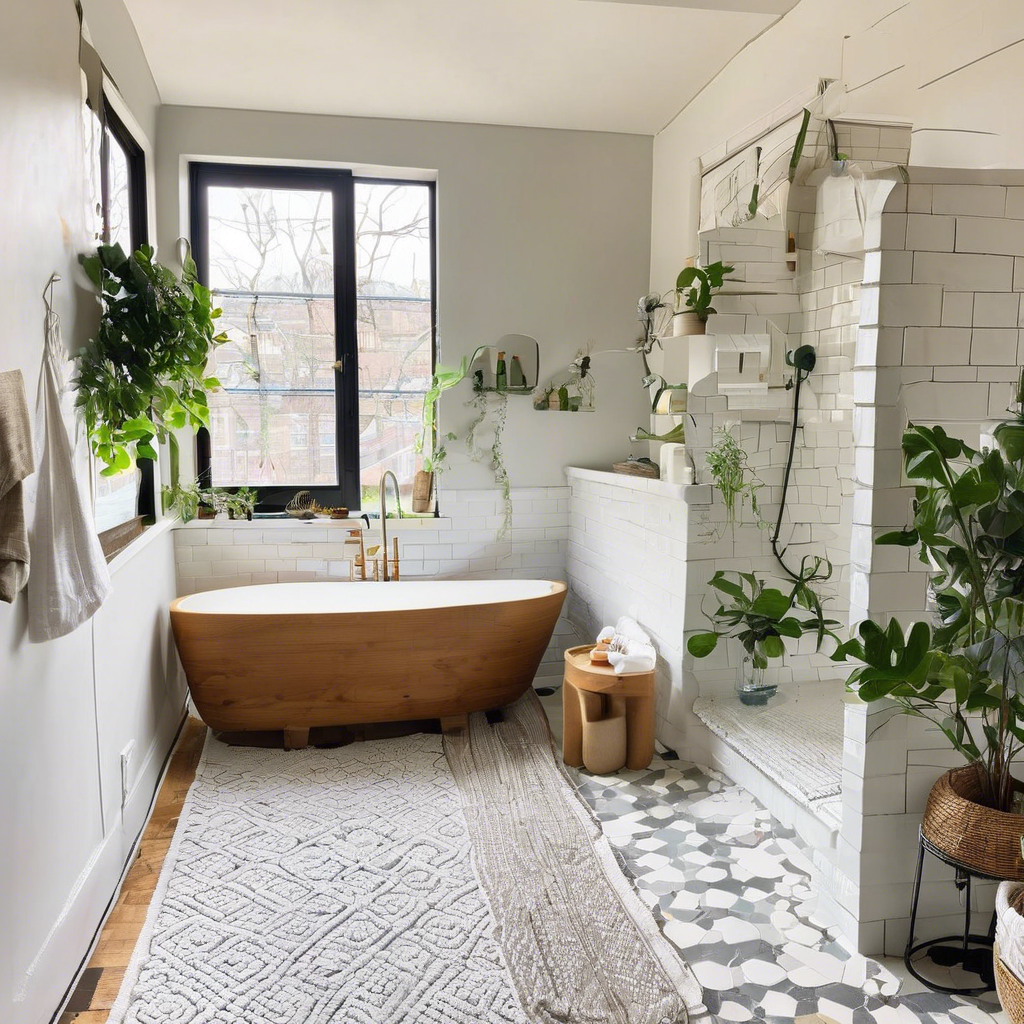
Plastic-Free Bathroom: Simple Swaps for a More Sustainable Routine
Did you know that traditional hygiene and personal care products are some of the biggest contributors to plastic waste? Thankfully, it’s possible to seriously reduce your plastic consumption by making some conscious swaps for an eco-friendly bathroom routine. In this article, we’ll dive into some simple-yet-effective ways to help you get started on your plastic-free journey!
Eliminate Plastic Bottles from your Cleaning Routine:
One of the easiest ways to reduce plastic is to eliminate plastic bottles from your cleaning routine. Traditional cleaning products are often sold in single-use plastic bottles, and these containers usually end up in the landfill once we’ve finished the product.
A great alternative is to opt for refillable cleaning products or look for products that come in reusable containers. You can also make your own cleaning products at home using simple ingredients like baking soda, vinegar, and lemon juice. These homemade cleaners can be just as effective as their store-bought counterparts and help you save money while reducing waste.
Choose Sustainable Personal Care Products:
It’s no secret that the beauty industry is closely tied to trendy, expensive products. Hence, it is often associated with excessive packaging and single-use plastics that add to environmental waste. A report by Zero Waste Europe found that personal care products account for a significant percentage of microplastics in our oceans.
Fortunately, there’s been a growing movement towards more sustainable personal care choices. You can now find shampoo, conditioner, and soap bars that are packaged in cardboard or compostable packaging. These options often come packaged in minimal, plastic-free packaging and can be found in almost any store. Additionally, make-to-order products are also a growing trend, delivering products directly to consumers in reusable and returnable containers, which are then reused many times over.
Say No to Microbeads:
Microbeads are tiny plastic particles that are often found in exfoliators, scrubs, and toothpastes. These tiny plastics slip through water filtration systems and end up in our oceans and marine life. In 2015, President Barak Obama signed the Microbead-Free Waters Act that banned the manufacture and sale of microbeads in the U.S.
When you’re looking for exfoliators or toothpastes, be sure to check the ingredients list for plastics, including polyethene or polypropylene. Turn to natural alternatives to achieve the desired results without contributing to environmental pollution. Some sustainable options include coffee grounds, sugar, and salt for exfoliators, and charcoal for toothpaste.
Use Wooden Accessories for Beauty Applications:
Plastic-free beauty doesn’t mean sacrificing the quality or fun of your usual beauty routines! Wood accessories like brushes, spatulas, or combs are making a comeback, and for a good reason. They are durable, environmentally friendly, and utilize materials that come from sustainable sources.
Opting for wooden accessories is a great way to reduce your plastic consumption and bring an eco-friendly touch to your beauty routine. Furthermore, these accessories look beautiful, and you can find models that are designed to be ergonomic and functional.
Create a Low-Plastic Medicine Cabinet:
It’s easy to overlook medicine cabinets when considering plastic-free alternatives, but they present a significant opportunity for reduction. Try looking for alternatives to plastic packaging for things like Band-Aids, gauze, and medications.
Fortunately, many brands are redesigning their packaging to use recycled plastic or more eco-friendly materials. There are also refillable options for certain products, like hand sanitizer, shampoo, and conditioner, allowing you to minimize waste from these items.
Consider Eco-Friendly Period Care:
Period care products are typically wrapped in plastic, leading to significant plastic waste for those who use them. However, there is a growing selection of sustainable period care products that aim to reduce this plastic pollution.
There are reusable silicone cups that are a fantastic plastic-free alternative to tampons and pads. Reusable cloth pads are also an eco-friendly option, as these are made from natural materials and can often be composted. Looking for menstrual cups or cloth pads in local sustainable or health stores is also a great way to shop locally and sustainably.
Don’t Forget about Sustainable Oral Care:
Traditional oral care products like toothbrushes, toothpaste, and mouthwash often come in single-use plastic containers. However, several eco-friendly options make it easy to reduce your plastic waste while still maintaining good oral hygiene.
For instance, you can switch to a bamboo toothbrush, as bamboo is a renewable resource that needs minimal water and pesticides to grow. You might also consider other plastics-free toothpaste options, including toothpaste tablets or those in glass containers, which are widely available nowadays.
Conclusion:
Reducing your plastic waste can feel like a daunting task at first, but it’s easier than ever to make sustainable swaps across your entire bathroom routine. Whether you’re looking to improve your skincare routine, period care, or oral hygiene, there are numerous options available to help you make a difference.
Start making these swaps today, and you’ll be on your way to a greener, cleaner, and more sustainable bathroom routine in no time.